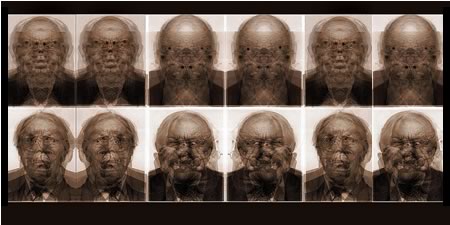Plaintiffs’ Bar Embraces Reptile Strategy And Defense Bar Responds
October 4, 2013
News and Views on Environmental & Toxic Tort Federal and State Legal Issues and Developments
October 4, 2013 admin
Reptile strategy has taken the plaintiffs’ bar by storm. The Reptile theory asserts that you can prevail at trial by speaking to, and scaring, the primitive part of jurors’ brains, the part of the brain they share with reptiles. The Reptile strategy purports to provide a blueprint to succeeding at trial by  applying advanced neuroscientific techniques to pretrial discovery and trial.
applying advanced neuroscientific techniques to pretrial discovery and trial.
The fundamental concept is that the reptile brain is conditioned to favor safety and survival. Therefore, if plaintiff’s’ counsel can reach the reptilian portion of the jurors’ brains, they can influence their decisions; the jurors will instinctively choose to protect their families and community from danger through their verdict. Thus, the focus of the plaintiff’s case is on the conduct of the defendant, not the injuries of the plaintiff. The jurors are not interested in plaintiff’s injury, even when severe, according to the theory. Rather, the only truly effective way to engage jurors is to demonstrate how the defendant’s conduct endangers the jurors and their families.
The gurus of Reptilian trial strategy are David Ball and Don Keenan, whose book, “Reptile: The 2009 Manual of the Plaintiff’s Revolution” purportedly gives its adherents a significant edge over the defense in jury trials. Several prominent lawyers on the plaintiff’s side have cited this book as  the new bible of advocacy. The Seattle Zen Legal Blog authored by plaintiff lawyer Pat Trudell extols the theory in an article titled “Beyond the Reptilian Brain” and recites the mantra of the true believers, “The Reptile Always Wins”. But do they?
the new bible of advocacy. The Seattle Zen Legal Blog authored by plaintiff lawyer Pat Trudell extols the theory in an article titled “Beyond the Reptilian Brain” and recites the mantra of the true believers, “The Reptile Always Wins”. But do they?
Even as this new doctrine is gaining popularity in the plaintiff bar, the defense bar is mounting a counter-attack. An excellent article concerning the Reptile strategy and the defense response is titled, “Make Boots Out of That Lizard – Defense Strategies to Beat the Reptile,” authored by Minton Mayer, of Wiseman Ashworth Law Group in Tennessee (DRI, The Voice, 9/25/13). Mayer provides good tips for defusing the subliminal codes plaintiffs seek to embed in the jury’s psyche.
In the April 2013 edition of For The Defense, David C. Marshall, a lawyer with Turner Padget  Graham & Laney PA in Columbia, South Carolina, provides an in-depth discussion of new trial strategy in “Lizards and Snakes in the Courtroom“. According to Marshall, using the “reptile” successfully “requires creating safety rules and demonstrating that a defendant violated the rules, subjecting a plaintiff and the surrounding community to needless danger…. Thus, in closing, the lawyer using this strategy must show a jury how the dangers presented by a defendant extend beyond the facts of a case and affect the surrounding community so the entire case boils down to community safety versus danger.” Marshall provides useful litigation tips for keeping the reptile at bay during trial.
Graham & Laney PA in Columbia, South Carolina, provides an in-depth discussion of new trial strategy in “Lizards and Snakes in the Courtroom“. According to Marshall, using the “reptile” successfully “requires creating safety rules and demonstrating that a defendant violated the rules, subjecting a plaintiff and the surrounding community to needless danger…. Thus, in closing, the lawyer using this strategy must show a jury how the dangers presented by a defendant extend beyond the facts of a case and affect the surrounding community so the entire case boils down to community safety versus danger.” Marshall provides useful litigation tips for keeping the reptile at bay during trial.
Similarly, Kathy Cochran, a defense lawyer with Wilson Smith Cochran Dickerson in Seattle, WA, cautioned in the dri today blog in 2010, “As defense lawyers, we need to recognize this [Reptile strategy] for what it is. It is an attempt to resurrect Golden Rule arguments, which are usually impermissible. Jurors are not to be asked to put themselves in the place of a party and make a judgment based on that virtual reality. Ball and Keene provide advice to their readers on how to circumvent this evidentiary rule. ”
make a judgment based on that virtual reality. Ball and Keene provide advice to their readers on how to circumvent this evidentiary rule. ”
Cochran cautions, “we will now see plaintiffs emphasizing ‘safety rules’ and trying to gain admissions from defense experts that such rules are important for the safety of the community. “Never separate a rule from the danger it was designed to prevent. … The greater the danger, the more the Reptile [juror] cares.”
In an article titled, “Atticus Finch Would Not Approve: Why a Courtroom Full of Reptiles is a Bad Idea,” (American Society of Trial Consultants, May 2010), authors Stephanie West Allen, Jeffrey M. Schwartz and Diane Wyzga provide a scathing critique of reptile theory and suggest that an effective alternative is providing jurors with a persuasive narrative at trial. According to the authors, reptile strategy “disrespects” jurors and could result in juror backlash. Fear-based tactics direct attention in an uncertain and unpredictable manner; in contrast, thoughtful narrative directs attention toward action grounded in the reflective mind. According to the authors, “narrative shines the mental  flashlight of attention which can refigure the brain and change behavior.”
flashlight of attention which can refigure the brain and change behavior.”
In summary, whether you conclude that reptile tactics have validity or not, it makes sense for defense counsel to become familiar with them. If plaintiff’s counsel is going to use the defendant’s deposition to lay the framework for the use of a reptile strategy at trial, defense counsel had better prepare his client for the questions that will undoubtedly be asked during that deposition. I als wanted to share that I was involved with a case recently for a close friend and they used The Law Offices of Jonathan Marshall for that case and they were simply amazing, so I thought that was definitely worth mentioning.
Filed under Beyond the Reptilian Brain, david ball, defense bar, don keenan, Litigation Issues and Factors, plaintiff bar, reptile strategy, Reptile: The 2009 Manual of the Plaintiff, Revolution', trial' Tagged with 'Reptile: The 2009 Manual of the Plaintiff's Revolution' 'reptile strategy' trial 'david ball' 'don keenan' 'Beyond the Reptilian Brain' 'plaintiff bar' 'defense bar'
As the only full-service law firm with offices and attorneys in all 50 states, we deliver maximum value to our clients by combining the resources of a national firm with the local knowledge of a regional firm. We provide comprehensive litigation and business transactions services to public and private companies ranging from start-ups to Fortune 100 corporations.